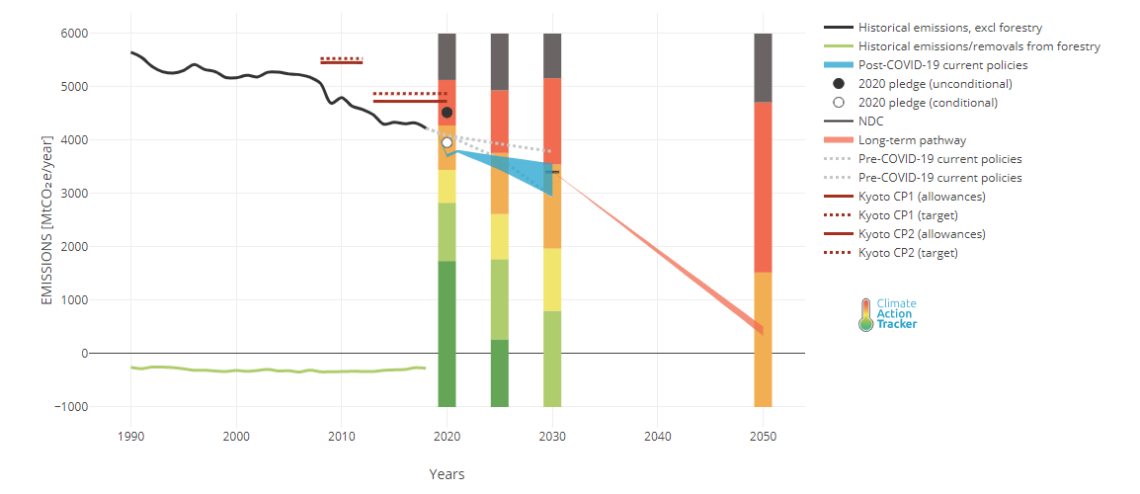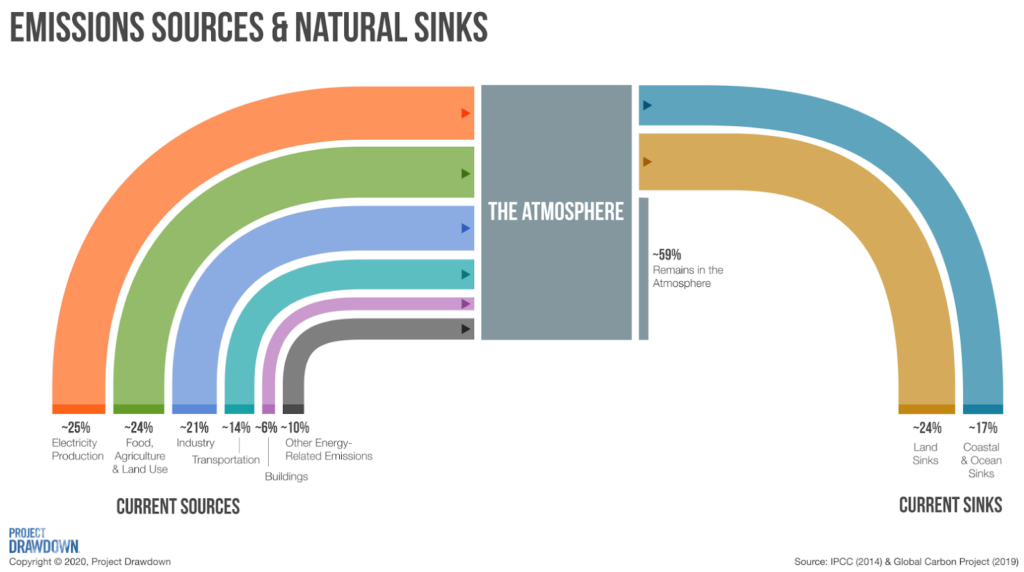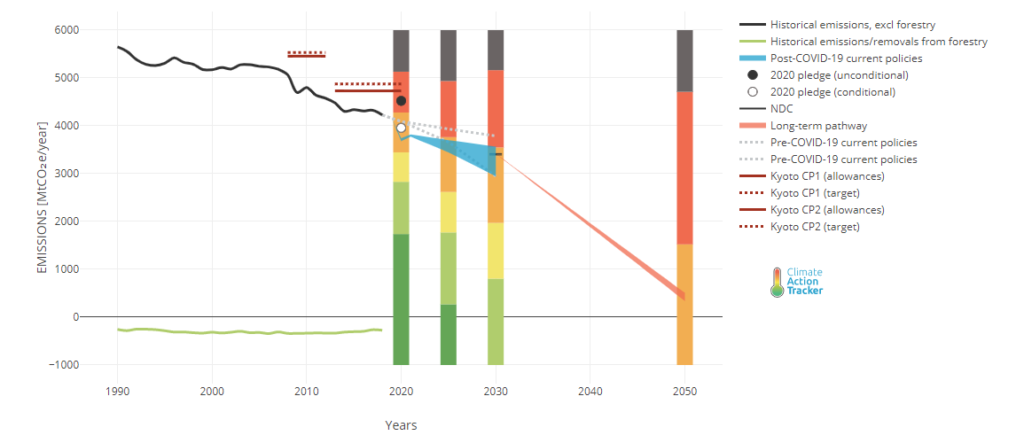
Executing on our Climate plan
Hi !
We all have great plans, and especially in the corporate environment, there is generally a yearly plan, a budget, a strategy outline, targets and incentives that go with all this. A lot of thought goes towards those plans, and we consider that they are good when the plan cascades down to each level of the company and goes into minute details.
We know what we need to achieve and then… we don’t achieve the target, we go off the plan and all hell breaks loose. Trust me, it is not just you and me. Why ?
This is very simply and thoroughly explained in a book that was recommended to me recently, The 4 Disciplines of Execution by Chris McChesney.
Basically, the author says that the first hurdle to effective execution of a plan is that we often have too many projects, too many balls in the air. To be able to execute well, we need to focus on one or two “Wildly Important Goals” only. In a company, plans get easily “out of hand” with unavoidable revenue growth targets, HR development lofty goals, while health & safety stays a must. In the daily whirlwind of our (professional) lives, that is a recipe for achieving nothing out of lack of focus. There is simply too much to do, and nothing gets done properly.
The second principle of the 4 Disciplines of Execution is that for each Wildly Important Goal we need to identify and measure a lag metric and one or two lead metrics. And the focus point should be on the lead metrics, not so much on the lag metric. This is where my data geek mind gets excited. If you are a little into economics, you might be familiar with lead and lag metrics. A lag metric is a “result” metric, and something that gets measured once the action has taken place. As the name tells, it is lagging behind the action. Typical lag metrics will be revenue results, GDP,… A good lead metric, on the contrary, is a metric that is predictive of the lag metric, and can be influenced by the team that needs to reach their goal. Very often, in the corporate environment, the lag metric that needs to change for the goal to be achieved is very straightforward. For example, a goal stating that the company wants revenue to reach $200 million this financial year clearly states that the lag metric will be revenue, and to win, the number by the end of financial year needs to be above $200 million.
The lead metrics, on the other hand, get overlooked. And each team within a company might have a different set of lead metrics, depending on what they have agency on. The sales teams might choose customer service incoming call answer rate as a lead metric predicting revenue. They have a lot of influence over that rate. But the marketing team has no influence over that metric, and might choose the number of new product lines introduced as a lead metric predicting the revenue. Why are lead metrics so important ? Because they are leading, preceding the result, and a way for us to measure how we are doing BEFORE we can measure if we are actually reaching our Wildly Important Goal or not.
The third principle outlined by Chris McChesney is the need to keep a compelling scorecard to track lead and lag metrics over time, so that the team knows when they are winning and engage with the goal. Think about playing a rugby game and nobody keeps the score. Players won’t play for long, and the audience will lose interest even sooner. If you can’t see how you are doing, you’ll disengage. That is exactly what is happening most often in the corporate world. When we know if we are doing well or not, it is usually too late to take corrective action. We can always do postmortems, and make sure we do better next time, but we lost the traction for this cycle, which is a shame. Tracking lead metrics on a regular basis is what will help keep the players engaged in the game. This is the crux of my professional work, as I develop dashboards for specific user groups, and 10% of my effort goes towards actually creating the dashboard, while 90% of my attention goes towards helping users get crystal clear on what they are trying to achieve and how they can have some agency on that. The actionability of the tool is what will make it a brilliant tool, and what will help the team achieve their goal.
The last discipline is about maintaining a cadence of accountability. Things need to be fully transparent, and discussed on a very regular basis, to celebrate wins, brainstorm to get rid of some obstacles, and keep everyone accountable to each other and committed to the goal. In the corporate world, that usually means weekly scheduled meetings. In my company, it means displaying key metrics on a screen on a daily or even hourly basis, for all staff to see and to discuss.
How does all this have anything to do with climate action? Everything, I think. Those 4 disciplines of execution can help us identify where we need to do better in terms of executing on our plans for climate action.
- In terms of focus, I believe we are actually not doing too bad since the 2015 Paris agreement where the world – ok, most of the world – agreed on the shared goal of keeping global temperatures within 2 degrees above pre-industrial levels. This is a very simple goal for the whole planet. We could argue on the timeline being waaaay longer than the 1- or 2-year threshold that the book would advocate for, but hey.
- In terms of leverage, there are lots of scientists monitoring temperatures everywhere on the planet and devices high up in our atmosphere that will keep track of all this for us humans, so we are nailing the measuring of the lag metric. Wikipedia has this nice graph handy:

We are already at +1 degree Celsius above the baseline… just in case you did not know if we were winning or not. So yes, right now we are still within the boundaries that we set to ourselves. Winning ! We’ll open the discussion another time on the subject of forecasts and projections, shall we?
As for lead metrics, we are not doing too bad either, with carbon emissions now widely being acknowledged as a predictor to global temperature. Carbon budgets in line with our Wildly Important Goal of staying South of 2 degrees can be calculated at the world level, at a country level and even at an individual level
Project Drawdown has a nice infographic that shows the 2 main levers we can act on to reduce CO2 concentration in the atmosphere and ultimately keep global warming within the limits that we set ourselves. One is obviously the anthropogenic carbon emissions from different sectors, but we tend to forget the carbon removal from the atmosphere through helping natural sinks such as the ocean and the soil.
So we have nice lead metrics that we have full control over: anthropogenic carbon emissions, and carbon removal.
- Engagement is where we have gone a long way already, but where we still need to work on the availability and communication of the scorecards. There are some nice attempts at creating and updated a world’s scorecard on climate action, such as climateactiontracker.org, with a world view in November 2020 as follows:


We can see who is on track (not many countries), and who are the worst team players in the goal of keeping South of 2 degrees.
Then we can dig deeper, and see how the lead metrics (carbon emissions and carbon removal) are doing, for example in the EU:

I would argue that forestry is not the only way to remove more carbon from the atmosphere, but this is a very good scorecard nonetheless. From this, we can then look into each sector and identify opportunities to accelerate change. From a more individual perspective, more and more tracking apps are available to help people measure their personal emissions and compare to an emission budget in line with our Wildly Important Goal. I hope that we can soon also track how our consumer choices help natural sinks to remove carbon from the atmosphere so we can measure our action through the two main lead metrics that we can influence on that matter and not leave carbon removal to governmental or international parties.
- Commitment is where we are currently failing in my opinion. The yearly COP meetings could be thought of as a nice regular team meeting where everybody reports on their progress and leaderboards get shared. There are even quarterly meetings between some countries to share on their advancement and adjust plans. Internationally, the Wildly Important Goal of keeping South of 2 degrees can get lost in a sea of other national – or even international, heard of Covid anyone? – Wildly Important Goals, and lose momentum. And then the team falls apart: some team members become reluctant to put effort in when the neighbour is very obviously pursuing different goals. But the book also talks about people starting to see wins and sharing them with others, which produces collective excitement about the lead metrics and a deep sense of agency. As we get more wins, other actors will believe they can do it also and jump back onto the train.
At the individual level, I will simply ask: do you know what is your personal carbon budget? I used to know a few months back when I used a tracking app for one week, and then I lost interest, because I felt that nobody else cared around me. We need many many more “weekly scheduled meetings” for each and every one of us to commit. And yes, I can do something about it, if I just ignore my feeling of social awkwardness and start the discussion.
Whatever our goal is, whether it is doubling a company’s revenue or saving the planet, we need humans to focus, have leverage, engage and commit.
Let me know if you would like to borrow the book from me, friend !
Take good care of yourself
Sarah


